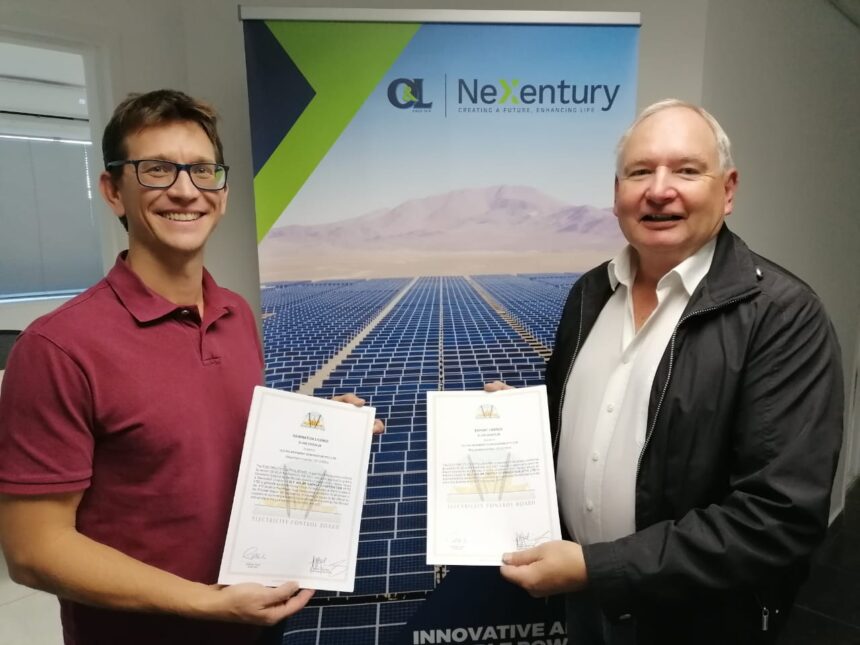Renewable energy company, O&L Nexentury, will soon contribute 100 Megawatt (MW) of electricity through a N$1 billion solar photovoltaic (PV) investment just outside Windhoek. The go-ahead for the solar plant was confirmed after the Ohlthaver & List energy subsidiary recently received both its generation and export licences from the Electricity Control Board and the Ministry of Mines and Energy. Both licences are valid for 25 years.
With the massive investment tag of over N$1 billion, the solar power plant is intended to be connected to one of NamPower’s largest substations. This means the electricity generated will be accessible by industrial energy users such as mining companies, regional electricity distributors and NamPower. Some of the power generated at the solar plant will be exported to the Southern African Power Pool (SAPP).
With phase 1 of the solar plant scheduled to be up and running by mid-2024, Bernd Walbaum, managing director of O&L Nexentury, shared his enthusiasm for progress on the project. Walbaum: “This is a most exciting project we are embarking on as we expand clean energy supply in Namibia and beyond our borders. As part of our O&L group purpose, ‘Creating a future, enhancing life’, this project promises to be a positive contribution to the generation of renewable energy in the country and speaks to our commitment to expanding clean and sustainable energy solutions.”
The massive Namibian solar plant comes at a time when O&L Nexentury’s German operation was granted regulatory approval to build Germany’s largest floating solar PV plant of 15 Megawatts on a gravel lake.
Operating as a vertically integrated developer of renewable energy projects, O&L Nexentury is active in Namibia, South Africa and Botswana as well as West Africa and Europe. The company offers engineering, procurement, construction and operation & maintenance services and has a pipeline of various exciting projects, including the development of PV solar plants to power the production of green hydrogen.
National Integrated Resource Plan (NIRP)
Meanwhile, the energy ministry’s final report on the NIRP, prepared in October last year, indicates numerous solar projects have been commissioned in the last five years under independent power producer (IPP) contracts and through the renewable energy feed-in tariff (REFIT) programme. These projects amounted to a total installed capacity of 171.8 MW, of which 223.8 MW is rooftop solar net energy.
The NIRP report also shows that in 2020, 199 MW out of 688 MW of installed capacity was either provided by IPPs under bilateral contracts with contestable customers or with electricity sold by IPPs to NamPower. The remainder of the 688 MW is being supplied by NamPower.
Moreover, Namibia’s load (GWh) is projected to grow by an average of 2.7% per year over the next 20 years and peak demand at a very slightly higher rate of 2.8% per year.
“The growth rate of load (GWh) flattens off from 2030 onwards as the electrification access programme achieves its goals. A number of large step loads are expected to be developed in the early 2030s which would counterbalance the drop in the growth of load but it is anticipated that they would add more to the peak demand than to the load leading to a slight fall in the system load factor,” the NIRP report reads.
Currently, NamPower continues to supplement its energy requirements with imports from neighbouring countries in the SAPP region. In 2021, NamPower imported 67% of the total energy requirement from SAPP, Eskom (South Africa), Zambia Electricity Supply Corporation Limited (ZESCO) and Zimbabwe Power Company (ZPC) to meet local demand. The reliance on imports has been steady at around 50% of total requirements throughout the years since 2014.


